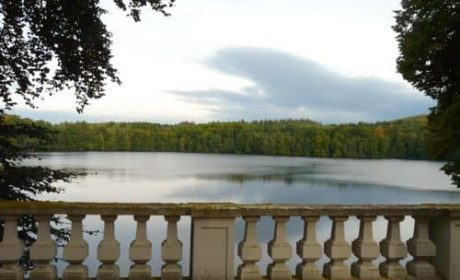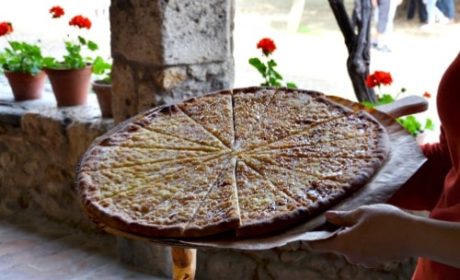We always love hearing about unusual destinations from around the world. Guest contributor, Susan Guillory from The Unexplorer, recently traveled to beautiful Poland, which is exciting in its own right. But her sponsored tour of the amazing Wieliczka Salt Mine looks like it was an unforgettable experience.
When I told my friends one of the sights I was going to see on a media trip to Poland was a salt mine, I got confused looks. Why in the world would I be excited about that?
But I’d visited the website and seen the gorgeous high-ceilinged caves with chandeliers, and I was intrigued.
A salt mine steeped in history

The Salt Mine is a well-oiled tourism machine, with multilingual tour guides leading gaggles of visitors around nearly 2 miles and 800 steps. My group of travel writers actually took a different path because one of us had an injury that prevented her from being able to handle stairs. Still, we wound down three of the nine levels, and didn’t make a dent in seeing even a fraction of the 2,400 chambers.
The Wieliczka Salt Mine opened in the 13th century. There’s a wonderful legend of how the mine began.
A Hungarian princess named Kinga was set to marry a Polish Duke. When her father asked her what she wanted as a gift, she had an unusual request: salt.
She wanted a gift she could share with her people in Poland. Her father gifted her a mine in Hungary, where one day she knelt to pray, and then surprisingly, threw her engagement ring inside.
Kinga took a group of miners with her to Poland, and as they neared Krakow, she ordered them to start digging for salt. They did, and what do you suppose they found?
Her engagement ring!
This was the site of what would become the Wieliczka Salt Mine. Kinga is now Saint Kinga, and there’s a beautiful chapel in the mine dedicated to her.

There are other wonderful fairy tales and legends surrounding the mine, some dealing with dwarves and others with The Treasurer, a sort of miner’s guardian.
Wieliczka stopped operating as a mine in 1996, though some 400 miners continued to maintain the mine afterward, primarily pumping out water that seeped into the 170 tunnels.
Miners with an Artistic Touch
I guess spending your days in the salt mine in the dark doesn’t do much to spark your creativity (though it was a noble job that men passed down to their sons…and still do). That’s why over the decades, many miners have been involved in carving statues within certain chambers.
The Chapel of Saint Kinga was my favorite for sculptures. The entire large chamber has carvings of religious figures like Jesus and his disciples at the Last Supper, Pope John Paul II, and Mary. There’s a gorgeous altar where special masses and weddings are held too, all carved by miners over the years.

But the artistic flair doesn’t stop with statues. The mine also holds several underground concerts throughout the year, including each New Year’s, which I imagine must be fabulous. And each summer, there’s an orchestra made up of actual miners that’s been playing for 200 years (well, not the same miners, but you understand).
Resourceful operations worth their salt

One thing I was confused about was where the bath salt, table salt, and other salty gifts available in the gift shop came from if the mine stopped operating in 1996. I felt sure that they tried to pass off some China knockoffs as authentic Wieliczka Salt Mine souvenirs. But then I discovered the answer.
Our tour guide said that with all the water they have to pump out of the mine annually, they actually pull the salt from the water to make their souvenirs. How resourceful!
After that, I eagerly shopped for gifts, and was pleasantly surprised how cheap they were. A packet of bath salts ran three for $1, more or less, and a generous bag of table salts under $3.
Poland is a fantastic place to find affordable gifts to bring home. I was glad to see that the mine didn’t hike up their prices just to take advantage of the one million tourists that visit each year.
Add Wieliczka Salt Mine to your Poland tour
One thing I learned while in Poland is that the country has 14 sites on the UNESCO World Cultural and Natural Heritage List, and that it was one of the first countries to have attractions be awarded such status. The Salt Mine is worthy of being a UNESCO World Heritage site.

If you go, plan for the tour to take about three hours. There are, as I mentioned, a ton of steps, so make sure you can handle them over a prolonged period.
The walking is slow, and you have time to rest. It was recommended that we wear light jackets, given the cool temperature of the chambers, but I found myself warm.



